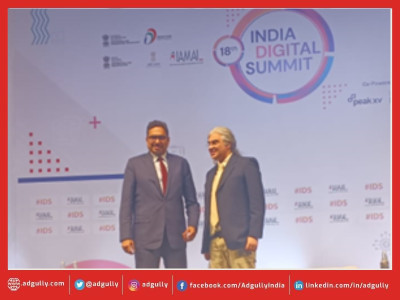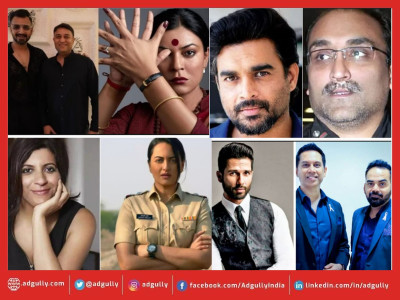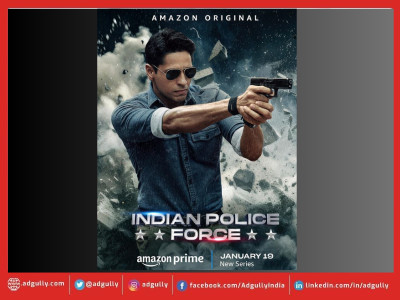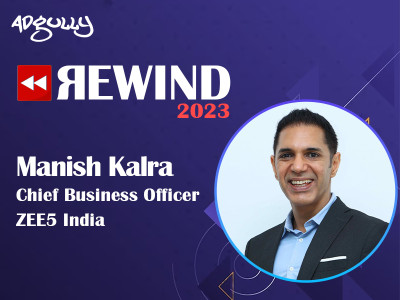Why differentiation is the way forward for OTT players – Part 2
Continuing with our feature report, in the second and concluding part we look at the scope for creating differentiation in OTT content as well as the challenges involved in this. We will also explore whether a hybrid business model will be a win-win for OTT players.
To recap: Part 1 of this feature report focussed on ways in which OTT players can create differentiation and whether it made sense for the OTT players to specialise in select genres and dominate that space.
Adgully spoke to Greg Armshaw, Head of Media, Asia, Brightcove; Deepak Segal, Head of Content, Applause Entertainment; Deepak Dhar, Co-founder and CEO of Banijay Asia; Vishnu Mohta, Executive Director - SVF; Co-Founder – Hoichoi; and Ali Hussein, Chief Operating Officer, Eros Digital, to seek their insights on the topic.
Scope for creating differentiation & challenges involved
For Greg Armshaw, creating great video content is limited only by the imagination of creators. The challenge is in ensuring that OTT players are able to maximise the available audience size for that content. This involves marketing, recommendations and discovery of the content. This can be as granular as A/B testing one’s thumbnails and posters as well as creating tailored ads to specific market segments.
There are technologies in the market today that can help build more immersive content experiences like interactivity, Augmented Reality and Virtual Reality, but in the short term we would expect to see more experimentation with traditional format lengths and perhaps engagement at the writing and production phases to increase engagement.
As a content studio and as a consumer, we have entered an ecosystem which offers an abundance of exciting content. “Digital streaming being a booming space, it gives creators like us an opportunity to experiment and indulge in content which otherwise gets restricted in the TV or maybe the film industry,” remarked Deepak Segal.
He added that the digital world is a fantastic combination of creativity and commerce and it’s a great time to be in the industry. It is extremely crucial to create content that is different and unique from the rest as today the consumer is exposed to exceptional content across the world. This creates a healthy challenge as it allows the writers/ makers to push the boundaries and create something which has not been seen before or which will have a lasting impression in the minds of the audience.
The significant transformation in the content preferences and consumption pattern of audiences in the digital space has led to a differentiated pattern of content production too. Deepak Dhar opined that original content works both for consumers and advertisers. Also, the scope for creative storytelling is big for brands to leverage OTT platforms for content. With the OTT players growing in the competition, the biggest differentiator for them in this space would be original and fresh content. There will be a considerable focus on developing Original content trending or goes viral.
For Vishnu Mohta, it is about pushing the boundaries of storytelling in terms of trying to come out with viewing differentiation content that has happened in the film business or television business and telling stories that have not been told so far in the mobile-focused centre and on-demand ecosystem.
There is more to experiment and create differentiation in this digital genre because the audience gives the OTT players credit for creating content that is differentiated, even if they fail at times. “I think it’s all about pushing the boundaries of storytelling and trying to perceive what people wants to see today and tomorrow and catering to that understanding,” Mohta added.
Ali Hussein here noted that there would be more and more young audience on the platforms because they are the ones who are mostly engaged with the content. Therefore, the question actually should be what kind of programming needs to be created to cater to the younger audience? Because that is becoming a benchmark to identify the demographics of the target audience. “I don’t think there is an answer to that question any time soon, because it is also possible that you might get a lot more viewership, but the overall affinity may not be that high,” he remarked.
Will a hybrid business model work?
A recent report by Brightcove revealed that as many as 80 per cent Indians were in favour of hybrid model that involved reduced price SVOD services with some ads. At the same time, content is clearly the primary driver for subscribing to multiple OTT services in India. Going forward, will we see OTT platforms introducing a hybrid model? How will it pan out in the long term?
Responding to the questions, Greg Armshaw opined that a hybrid business model would have to be embraced by all platforms if they wanted to maximise their revenues from OTT TV. According to Armshaw, this was not just subscription versus advertising, but also included sponsorship and branded content. “We can expect to see many more branded partnerships, where brands give away access to content or ancillary events as part of a promotional offer. For example, chocolate brands giving romantic movies away during Valentine’s Day or sponsoring family movies during festive season,” he added.
On the other hand, Deepak Segal pointed out that India being a price sensitive market, any difference in the subscription price would trigger the demand accordingly. On the one side there are players offering ‘Freemium’ or free content, while on the other side there are streaming platforms that are heavy on subscription. Introduction of a hybrid model that eould bring down the cost of subscription could definitely attract more viewers across the country, he felt.
Indian consumers do not mind seeing ads as part of their shows, especially if they are getting a deal (value for money), was Deepak Dhar’s observation. He added that OTT service providers should take advantage of this preference and make the advertising experience engaging while limiting the ad load per break. OTT platforms should consider this as a long term investment as it will be beneficial to them.
At the same time, Dhar stressed on the importance of creating the right content and then being able to monetise with the right audience. Original content is set to grow manifold as it forms an important part of a video OTT platform bringing “New Age Storytelling” to the fore. It also provides differentiated content compared to TV by showcasing short format stories which can be told over 10-12 episodes, giving the audience an opportunity to binge watch any series that they may not be following the series from the beginning. “Also, it is majorly the Original content which is trending or goes viral,” Dhar observed.
Compared to the international markets, the subscription costs in India are relatively cheaper, Vishnu Mohta pointed out. He added that most of the Indian OTT players have priced very aggressively, which means that most Indians don’t even think about price being a major factor for opting for a particular service or not. “Especially for first-time OTT service subscriber, I don’t think price is a consideration,” he noted.
Adding further, Mohta, said, “The beauty of India is that we never have a problem with the number of people, so you can go for very high volumes and as a result you will be able to go for more pocket-friendly prices. We have the advantage of a large population and a very big diaspora whom the OTT players can cater to.”
Ali Hussein foresees an evolution in the space and believes that each platform has its own uniqueness.
























Share
Facebook
YouTube
Tweet
Twitter
LinkedIn